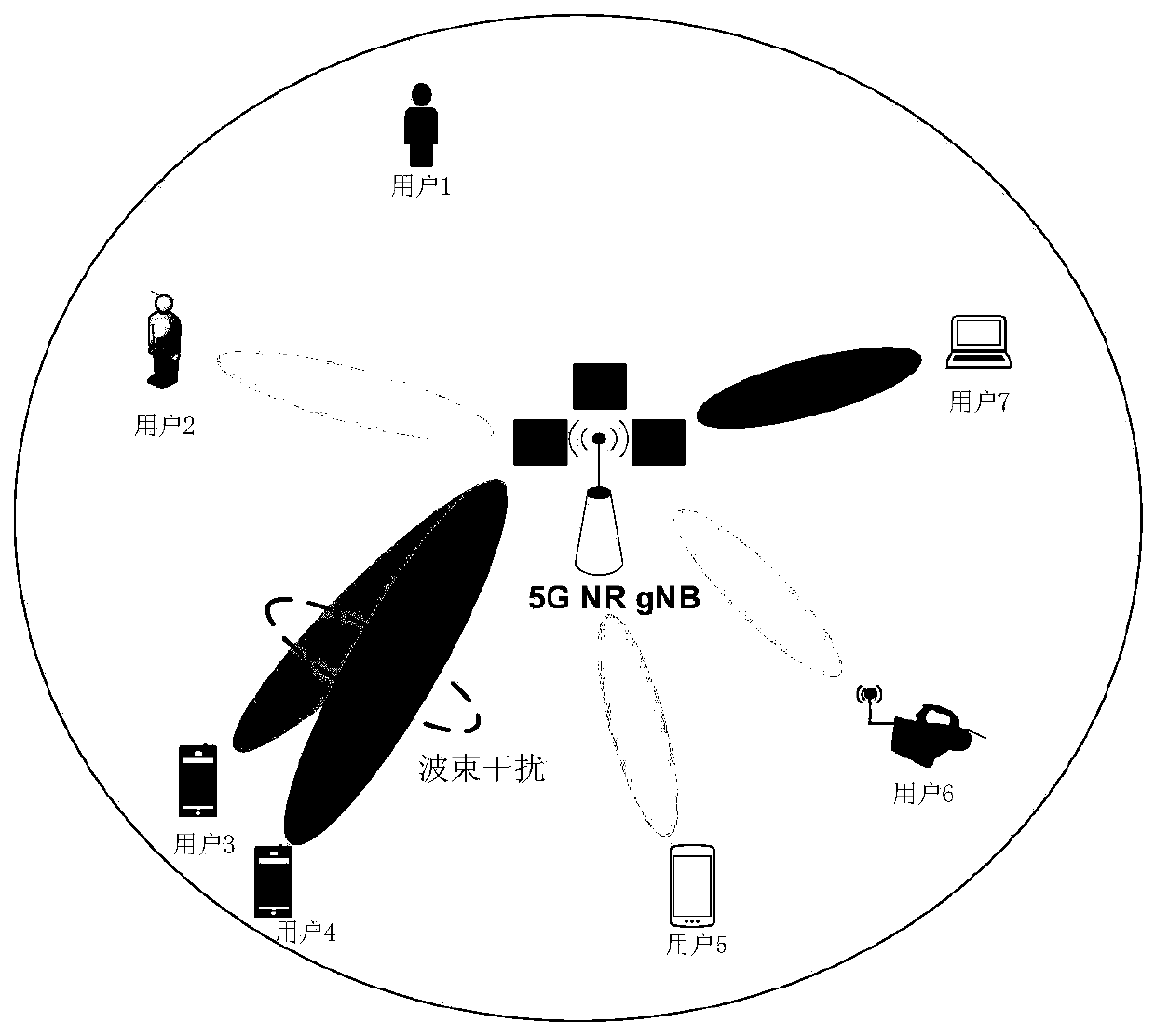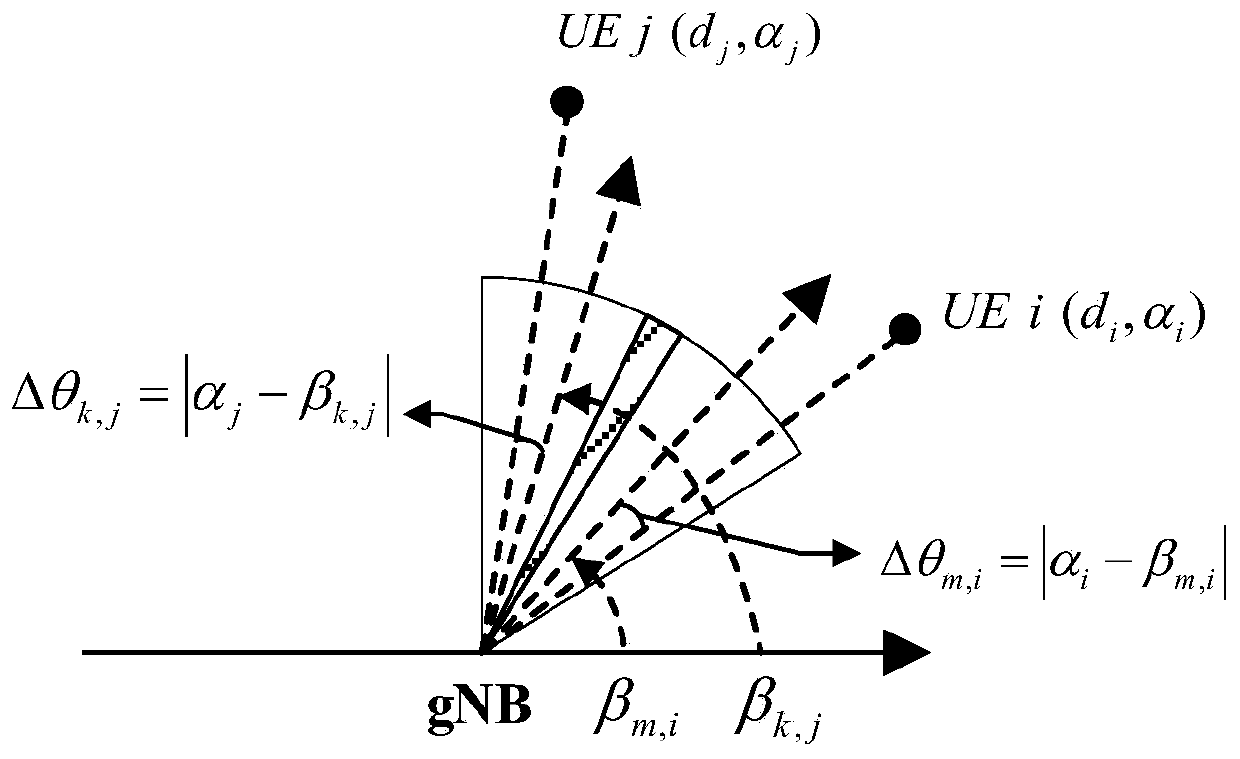Millimeter wave communication system multi-beam multi-user resource allocation method
A resource allocation and communication system technology, applied in the field of multi-beam multi-user resource allocation in millimeter wave communication systems, can solve the problems of user service quality degradation, failure to consider inter-beam interference, and failure to meet user service quality, etc., to achieve high path loss , Guarantee the effect of service quality
- Summary
- Abstract
- Description
- Claims
- Application Information
AI Technical Summary
Problems solved by technology
Method used
Image
Examples
Embodiment Construction
[0040] The present invention will be further described below in conjunction with the accompanying drawings and specific embodiments.
[0041] A multi-beam multi-user resource allocation method for a millimeter wave communication system, which deploys M beams on the base station in the same frequency manner, M≥2, and divides the airspace into M areas, and the beam m rotates in the area m to cover the area and serve the users in this area, 1≤m≤M; in the scheduling time slot t, first determine the users to be allocated in the beam in the first area, and then determine the users to be allocated in the beam in the next adjacent area in turn, specifically The allocation process consists of the following steps:
[0042] (1) Let m=1, then go to step (2);
[0043] (2) Determine the user to be allocated to the beam m based on the utility function, so that when the beam m is allocated to the user, the utility function of the user takes the maximum value, and then go to step (3);
[004...
PUM
 Login to View More
Login to View More Abstract
Description
Claims
Application Information
 Login to View More
Login to View More - R&D
- Intellectual Property
- Life Sciences
- Materials
- Tech Scout
- Unparalleled Data Quality
- Higher Quality Content
- 60% Fewer Hallucinations
Browse by: Latest US Patents, China's latest patents, Technical Efficacy Thesaurus, Application Domain, Technology Topic, Popular Technical Reports.
© 2025 PatSnap. All rights reserved.Legal|Privacy policy|Modern Slavery Act Transparency Statement|Sitemap|About US| Contact US: help@patsnap.com



